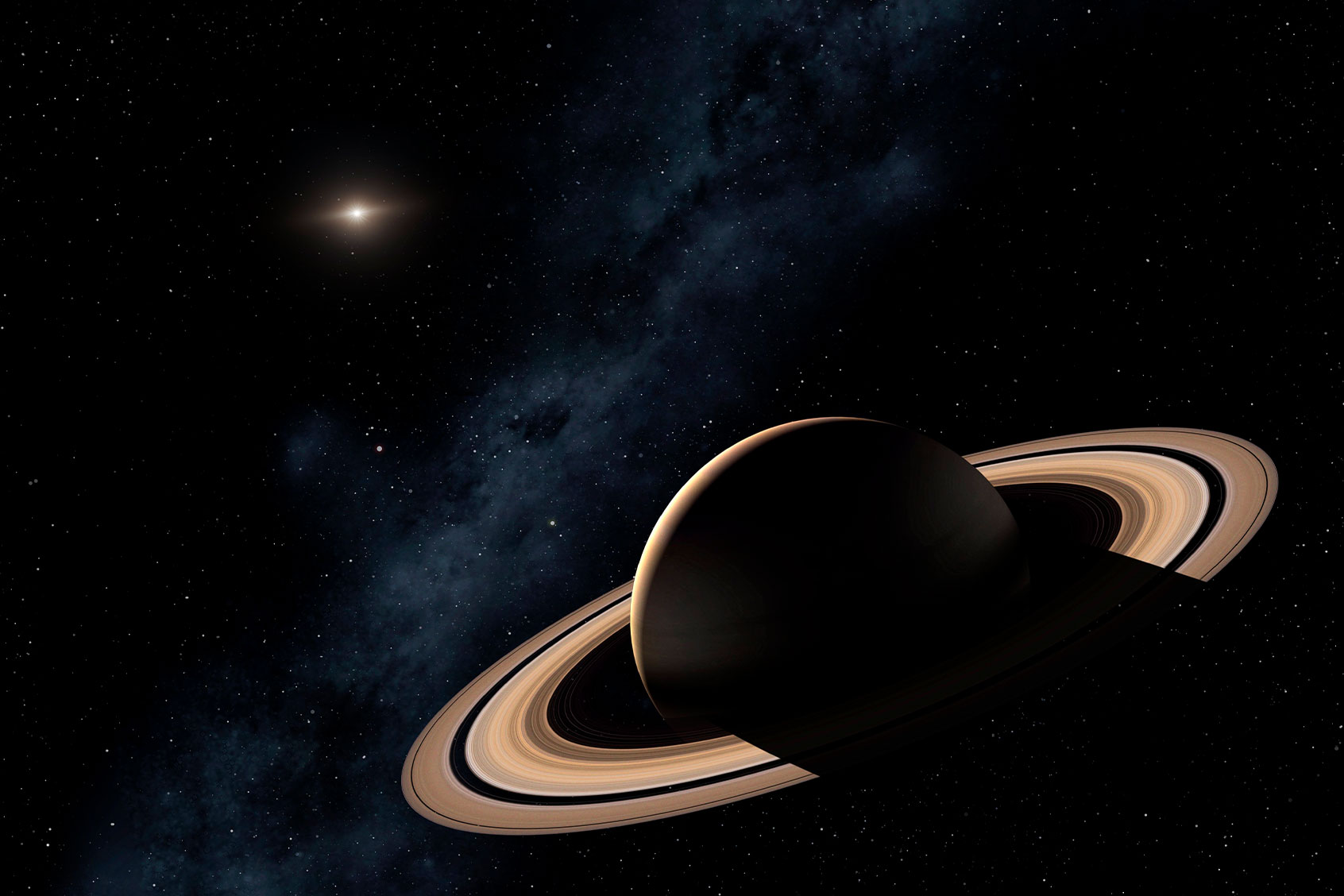At first glance, Enceladus doesn’t look like much — just a scuffed up, icy white ball that spins around the planet Saturn. Yet a recent study in the journal Nature revealed quite significant evidence for life on the distant moon. Using archival data from a past NASA mission, scientists analyzed a watery plume shot into space from Enceladus’ southern hemisphere, revealing traces of phosphorus.
For people who think of phosphorus as nothing more than a white powder used to make certain types of explosives, this news may seem unimpressive. Yet scientists consider phosphorus to be one of the essential building blocks of life.
“It’s the first time this essential element has been discovered in an ocean beyond Earth.”
The new data was culled from the Cassini-Huygens space research mission that was launched by NASA, the European Space Agency and the Italian Space Agency in 1997. Before the mission ended nearly 20 years later, the Cassini-Huygens space probe managed to provide unprecedentedly detailed readings about the planet Saturn, along with its rings and various satellites. While doing so, the data also managed to break down the chemical composition of the aforementioned Enceladusian water plumes — but it took until now for the phosphorus to be discovered.
“We previously found that Enceladus’ ocean is rich in a variety of organic compounds,” lead author Frank Postberg of Germany’s Freie Universität said in a statement. “But now, this new result reveals the clear chemical signature of substantial amounts of phosphorus salts inside icy particles ejected into space by the small moon’s plume. It’s the first time this essential element has been discovered in an ocean beyond Earth.”
Phosphorus is a vital element in the composition of bones, teeth, DNA and RNA. It is also essential in forming cell membranes and in creating adenosine triphosphate (ATP), an important energy source for most living things. This is why it is so significant that phosphorus was found — and, indeed, how it was found.
As the Cassini-Huygens probe flew through the enormous geyser-like water plumes that burst out of Enceladus’ South Pole, (along with Saturn’s E ring, which is actually formed by ice grains escaping Enceladus’s violent plumes), it acquired enough data to determine that the grains of ice ejected by the plumes contain many of the materials essential for creating life. Considering that any subsurface ocean in Enceladus is likely to be 26 to 31 kilometers deep (compared to Earth’s 3.7 kilometer deep oceans), this means there is literally plenty of room for life on Enceladus’ hypothetical oceans.
And that was before scientists confirmed the existence of phosphorus.
Want more health and science stories in your inbox? Subscribe to Salon’s weekly newsletter The Vulgar Scientist.
Considering that any subsurface ocean in Enceladus is likely to be 26 to 31 kilometers deep (compared to Earth’s 3.7 kilometer deep oceans), this means there is literally plenty of room for life on Enceladus’ hypothetical oceans.
This is not to say that all of the recent news out of NASA and the astronomy world has been encouraging, at least for those who hope to find alien life. A recent report from the James Webb Space Telescope announced that the powerful scientific instrument had closely examined an exoplanet (or planet that does not orbiting around our Sun) known as TRAPPIST-1 c. Best known for orbiting around the star TRAPPIST-1, astronomers have speculated that the planet could harbor life due to its Earth-like size and ideal distance from its star. This indicates that the planet may not be too irradiated to support life.
Enceladus, Saturn's icy moon, is known for its geysers that erupt with water from a subsurface ocean.
Scientists have just detected phosphorus—an uncommon element that's a key building block for life—in the plumes that these geysers spray: https://t.co/1XY5X2qtmF pic.twitter.com/2vPvLIvgZh
— NASA (@NASA) June 15, 2023
Yet the new report from the James Webb Space Telescope revealed that TRAPPIST-1 c does not have an atmosphere — which, unfortunately, is also considered essential for supporting life. As such, scientists are left to conclude that TRAPPIST-1 c no longer ranks on the list of potentially inhabited other worlds. However, several of the other worlds surrounding TRAPPIST-1 may still be candidates for bearing life, especially planets e and f, according to an analysis posted on the preprint server arXiv. More analysis is definitely warranted.
Nonetheless, there is still no rock solid evidence that life exists on planets or moons besides Earth, although NASA suspects microbes may be living on the Moon. But the astrobiology beat is often filled with disappointments.
In late 2020, evidence seemed to emerge from Venus that the atmosphere there contained phosphine (not the same as phosphorus), a gas that on Earth can only be produced by anaerobic bacteria (or bacteria that live in environments without oxygen). If Venus had indeed contained phosphine in its clouds, that discovery could prove that microscopic organisms live on that planet. Yet subsequent research failed to replicate the initial supposed findings of phosphine. Even worse for those who believe life may exist on Venus, a highly anticipated probe to Venus saw its funding slashed back in March.
At present, scientists determine whether a planet or moon may contain life by determining how similar it is to Earth in size, chemical composition, distance from its star and other key factors. As of February 2023, only 1.5 percent of the estimated 5,307 exoplanets in 3,910 planetary systems are catalogued as potentially habitable worlds. The bodies currently considered most likely to contain life include Wolf 1069b, Teegarden’s Star b, TOI 700 d, Europa and Mars.

